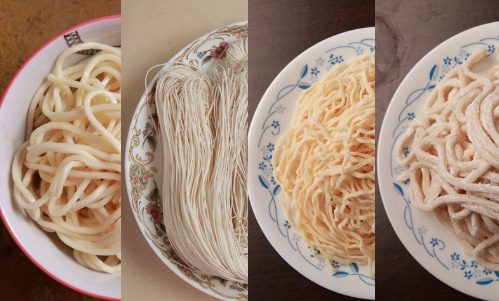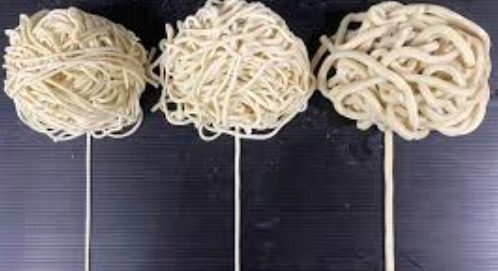The evolution of noodles, a staple in many cultures across the globe, reflects a rich tapestry of culinary innovation, regional preferences, and historical influences. From their ancient origins to their contemporary iterations, noodles have undergone significant transformations in form, flavor, and cultural significance. This journey spans continents, adapting to local ingredients, cooking techniques, and societal changes, ultimately becoming a universal comfort food with countless variations.
The earliest evidence of noodles dates back over four millennia, with archaeological findings in China suggesting their existence as far back as 2000 BCE. These ancient noodles, made from millet flour, differed significantly from the wheat-based varieties that later became dominant. As culinary techniques advanced, so did the diversity of noodle forms. Wheat noodles, introduced during the Han Dynasty, became a cornerstone of Chinese cuisine, evolving into myriad shapes—thin and delicate like vermicelli, flat and wide like belt noodles, or hand-pulled into chewy strands known as lamian. Each variation was suited to specific preparations, whether stir-fried, boiled, or served in broth.
Beyond China, noodles spread along trade routes, adapting to new environments. In Japan, wheat noodles took the form of udon, thick and soft, or soba, made from buckwheat and prized for their earthy flavor. The Japanese also developed ramen, which, though originally Chinese in origin, became a cultural phenomenon with regional broths ranging from soy-based shoyu to rich tonkotsu. Meanwhile, in Korea, naengmyeon, cold buckwheat noodles served in an icy broth, emerged as a summertime delicacy, while japchae, sweet potato starch noodles stir-fried with vegetables and meat, became a festive dish.

Southeast Asia developed its own distinctive noodle traditions, often incorporating rice as the primary ingredient. Vietnamese pho, though primarily known for its broth, features flat rice noodles that absorb the aromatic spices of the soup. Pad Thai, Thailand’s iconic stir-fried noodle dish, balances sweet, sour, and savory flavors with tamarind, fish sauce, and palm sugar, while laksa, popular in Malaysia and Singapore, combines rice noodles with a spicy coconut curry broth. These variations highlight how noodles seamlessly integrated into local flavor profiles, often becoming national symbols.
In Europe, pasta emerged as the dominant form of noodles, with Italy perfecting the art of durum wheat extrusion to create shapes like spaghetti, penne, and farfalle. Each region developed its own specialties—tagliatelle in Bologna, served with rich meat ragù, or orecchiette in Puglia, paired with bitter greens. Unlike their Asian counterparts, Italian pasta dishes often emphasize simplicity, allowing the quality of ingredients to shine. Central and Eastern Europe also contributed unique variations, such as Poland’s pierogi, filled dumplings resembling stuffed noodles, or Hungary’s nokedli, small egg-based dumplings akin to German spätzle.
The cultural significance of noodles extends beyond mere sustenance. In China, long noodles symbolize longevity and are a staple at birthday celebrations. In Japan, eating toshikoshi soba on New Year’s Eve represents letting go of the past year’s hardships. Italian families traditionally gather to make fresh pasta, a practice that reinforces communal bonds. These traditions underscore how noodles are deeply embedded in social rituals and collective memory.

Modern innovations continue to reshape noodle consumption. Instant noodles, invented in Japan in the mid-20th century, revolutionized convenience food, becoming a global phenomenon. Health-conscious adaptations, such as gluten-free or vegetable-based noodles, cater to contemporary dietary preferences. Fusion cuisine has further blurred boundaries, giving rise to dishes like ramen burgers or pho-inspired tacos.
Ultimately, the story of noodles is one of adaptation and reinvention. Whether served in a humble street stall or a high-end restaurant, they remain a testament to human ingenuity and the universal desire for hearty, satisfying meals. Their endless variations in texture, taste, and tradition ensure that noodles will continue to evolve, reflecting the ever-changing tapestry of global cuisine.


Be the first to comment